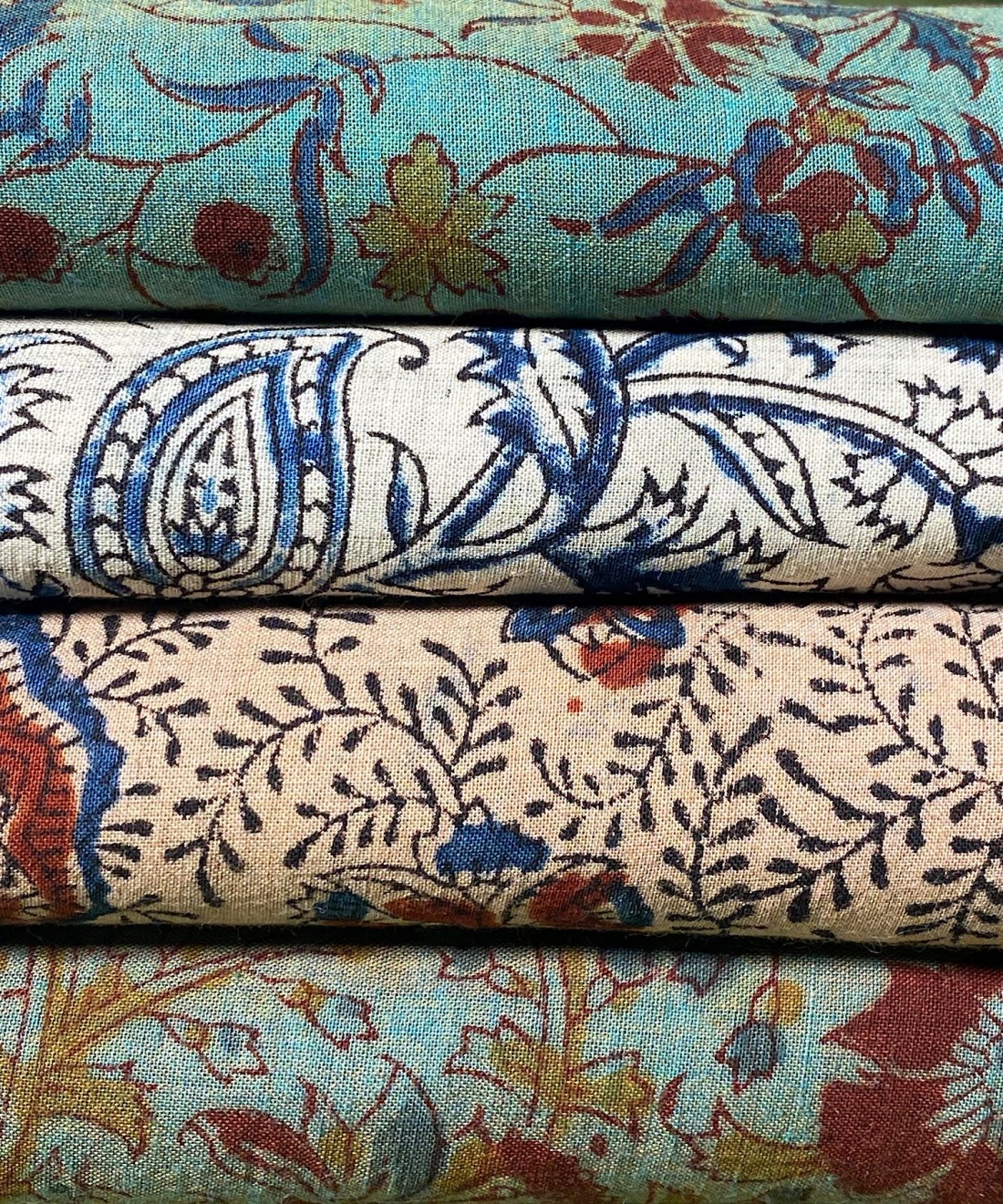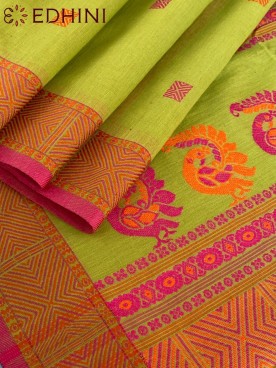Types of Kalamkari
Indian heritage is well known for its different types of handloom weaves and types. Among them, there are two primary types of kalamkari skills used for printing kalamkari fabrics in India, named after their birth places. One of them is named after the place of its origin,a village in Andhra Pradesh, called the ‘Srikalahasti’ skill of kalamkari. The other type of skill is named after the village of its origin ‘Machilipatnam' hand block print style of Kalamkari which is to the east coast of the Krushna district in Andhra Pradesh.
Kalamkari Art
Hand block print kalamkari motifs design include leaves, flowers, trees-vines, peacocks, birds, lotuses, etc and other natural elemental designs which are crafted by using wooden blocks or by hands. Natural color is used for weaving such fabric or saree.
Techniques of Kalamkari
Srikalahasti skill is done by crafting free hand designs on fabrics that is why it is also called as pen kalamkari fabrics. Whereas in ‘Machilipatnam’ skill, block prints are handmade. Near machilipatnam there is a village named ‘pedana’ where beautiful and mesmerizing hand block print kalamkari sarees are crafted. This skill is named as pedana kalamkari.
Kalamkari Print
Pieces of iron, alum and jaggery are soaked in water for 15 days. In this process the water turns into dark black colored liquid. This liquid is then used by artisans to craft outlines of kalamkari designs on a saree or fabric. Colours created from natural elements are used for printing designs. The dark and bright prints are of significance to original kalamkari fabrics.
Blocks used for printings on hand block print kalamkari sarees are made out of high quality teak wood. For this block, teak wood blocks are scrubbed, leveled up and given a thin white colour. Because of this white color designs made by pencils look more attractive and appealing. Sometimes, tracing paper is used to make free hand designs and then traced on wooden blocks. After tracing these designs on wooden blocks, according to the design, tools are used for intricate carving. Blocks of design outlines are separately carved and created.
To create Hand block print kalamkari fabric, natural threads of white coloured cloth of silk and cotton are selected. To remove the starch, fabrics are washed. Later, cow dung is dissolved in water in which the saree is soaked for a day. The next day, fabric is sundried. Powder of ink nut is soaked in water for a night and it's paste is created in which the saree is soaked again. Next day the fabric is washed, dried and made ready for hand block printing.
Because of this process, block print colors are permanent on the saree. Later, this saree is placed on a long and wide table. Firstly, outline blocks of central designs are created one by one using natural elemental colors. They are printed intricately on the saree by placing them on accurate positions by pressing, punching them on the fabric. After completion of printing designs on the saree, it is sun dried and then washed in flowing water and boiled in large utensils. Boiling the saree makes the colors dark, bright and enduring. For internal designs other blocks are used and again the saree is washed, dried and boiled for every time a different color is used.
The hard work of artisans behind the naturally beautiful sarees must be given the deserving price to make their living and the earthly art of Kalamkari prints in India must be preserved for our further generations.
Check out and shop all natural and handmade kalamkari art print fabrics and sarees on edhini.com








